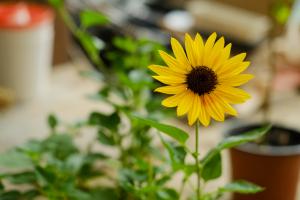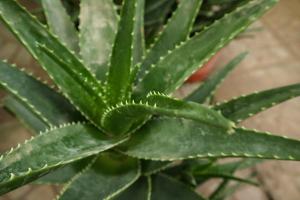Do You Put Stones in Bottom of Plant Pots?
One of the most common gardening tips that you might have heard is to put stones at the bottom of plant pots. This advice has been passed down through generations, and many people still follow it without really knowing why. In this article, we'll explore the reasoning behind this practice and whether it is really necessary.
The Theory Behind Using Stones in Plant Pots
The traditional belief is that by placing stones at the bottom of your plant pots, you create a layer of drainage that prevents water from sitting in the soil and causing root rot. The idea is that the stones act as a barrier, allowing excess water to drain through the gaps and preventing the soil from becoming waterlogged. However, is there any scientific evidence to support this theory?
What the Experts Say About Using Stones in Plant Pots
Contrary to popular belief, using stones at the bottom of plant pots doesn't improve drainage. In fact, it can actually have the opposite effect. According to horticulturists and planting experts, the water remains trapped in the soil above the layer of stones, with the result being that the soil becomes too wet and the roots of the plant can rot.
Another reason why stones may not be the ideal choice for plant pot drainage is that they can take up valuable space that otherwise would be occupied by nutritious soil. The roots of plants need to spread out and grow, not be impeded by a layer of stones at the bottom of their planting pot.
What to Use Instead of Stones?
To improve drainage in your plant pots, the key is to add a layer of materials that are coarse enough to encourage the excess water to drain away whilst still allowing the plant's roots to grow freely. Using items such as perlite, coarse sand or gravel, or a mixture of all three can provide the necessary drainage whilst still providing enough space for the roots to grow.
Additionally, it's important to select pots that are the right size for your plants. A pot that's too big will hold too much water, whereas a pot that's too small won't provide enough room for the roots and could stunt the plant's growth. So, choosing the right pot size is essential for maintaining healthy plants.
Conclusion
While many gardening enthusiasts still practice putting stones at the bottom of their plant pots, it's clear that doing so doesn't provide the intended benefits. Horticulturists suggest that a better option would be to use materials that are effective at drainage, yet still allow for root growth. In essence, choosing the right pot size and ensuring that there are adequate drainage holes at the bottom of the pot will help to keep your plants healthy and thriving.
Remember, when it comes to gardening, it pays to keep an open mind and be ready to challenge traditional practices. With a little research and experimentation, you might be surprised at what you can learn and how it can improve your gardening experience.

 how many times do yo...
how many times do yo... how many planted tre...
how many planted tre... how many pine trees ...
how many pine trees ... how many pecan trees...
how many pecan trees... how many plants comp...
how many plants comp... how many plants can ...
how many plants can ... how many plants and ...
how many plants and ... how many pepper plan...
how many pepper plan...































